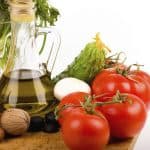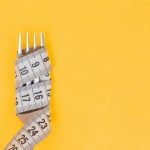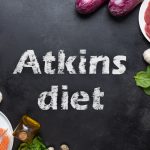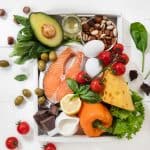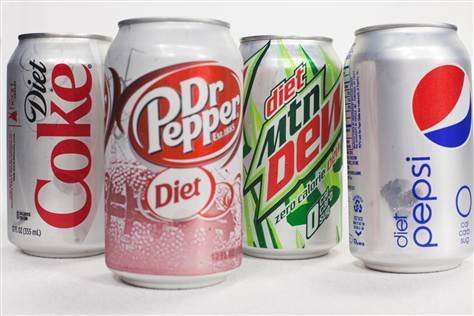
by Editor | Feb 12, 2015 | Nutrition
At first glance, diet sodas appear to be healthier options for individuals who want to lose weight. Diet sodas effectively mimic the taste of regular sodas and thus provide drinkers with the enjoyment they would get from sugar-sweetened soda. However, they do it without the 140 calories that most of those sodas contain. Diet sodas save you the calories because they contain artificial sweeteners in place of sugar. Unfortunately, use of these sweeteners can have some unpleasant health consequences. Here are some of the negatives of diet soda:
• Weight Gain
Just like sugar, artificial sweeteners trigger the production of insulin. Insulin causes your body to store fat, which means that consuming them can result in weight gain despite the fact that they have no calories. Another problem is that drinkers may be more likely to consume calorie-rich foods when drinking diet sodas since they know that their soda has no calories.
• Kidney Problems
A study from Harvard Medical School showed that women who had more than two diet sodas a day doubled their risk of kidney problems. The decline in kidney function is not a problem with sodas that contain sugar; therefore, it is believed that the artificial sweeteners are behind it.
(more…)
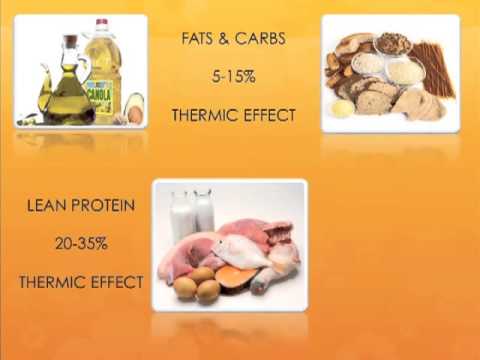
by Dianne Villano | Sep 22, 2014 | Nutrition
With a new “miracle” program or “nutrient” on every corner, most people are completely confused by all the conflicting information out there. Slick marketing and fads have left Americans fatter and frustrated by fact that weight seems to be found shortly after it’s lost.
Most people (including “trainers” and “fitness experts” are so focused on the newest diet or the latest exercise trend that most people (if not all) have absolutely no conception of the How’s and Why’s of a successful weight loss or fitness plan.
(more…)
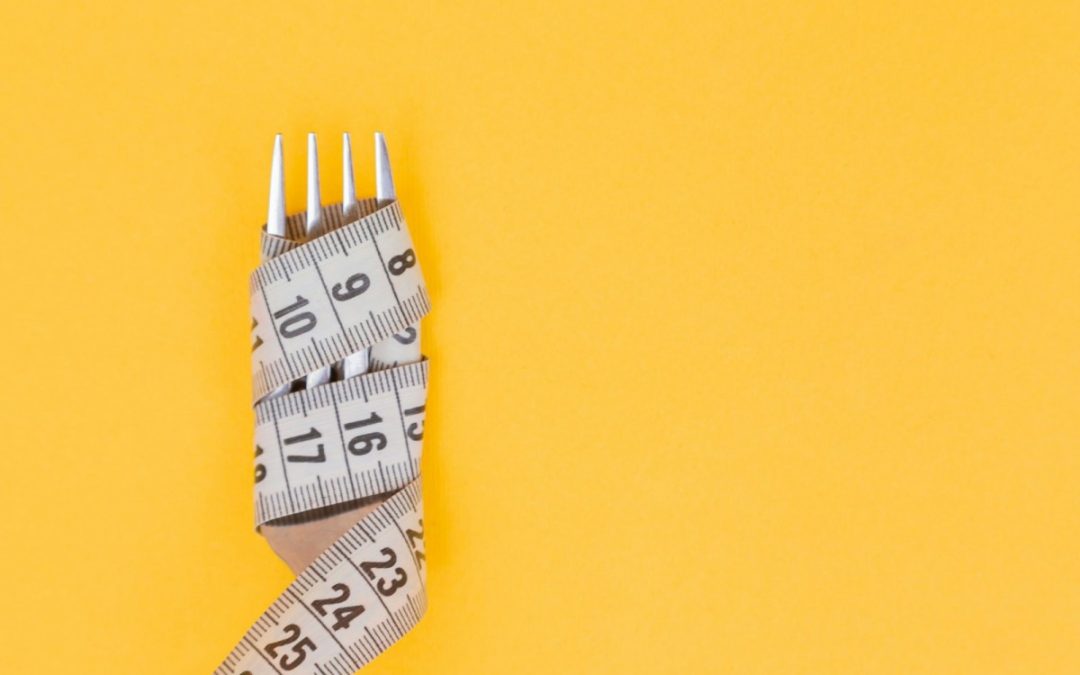
by Dianne Villano | Sep 22, 2014 | Nutrition
For years, I’ve said Americans are overweight because of “portion distortion.” We have become a society that is constantly “on a diet” or “off a diet,” labeling foods as “good” or “bad.” As a result, we’ve lost all sense of what constitutes an actual single serving of food or what a nutritionally balanced food plan even looks like.
First of all, not all calories are created equal. Different macronutrients are processed by the body differently, and chemicals and preservatives also impact the way a “calorie” is processed. You can read more about this in my article, “Is Your Diet Making You Fatter? TEF, Your Fat Loss Secret Weapon”.
While there are foods that are healthier than others incorporating just about any food into your diet comes down to the basics. Achieving the body of your dreams (and keeping it) requires eating whole foods in the correct amount for your body, fitness program, and goals 90% of the time.
If you master that, the other 10% won’t matter, and you will be living in the body of your dreams without ever being hungry, counting another calorie, or excluding your favorite foods.
Servings and Exchanges: The Key to Your Dream Body
“Serving” defined: A serving isn’t just the amount you put on your plate. A serving is a specific amount of food, defined by common measurements such as cups, ounces, or pieces.
“Portions” are simply the number of servings from each of the food groups that you are allocated each day to achieve your fitness goals (e.g., lose fat, gain muscle, maintain your healthy weight).
Typically, the first thing I hear upon presenting a new food plan to a client is, “That’s a lot of food, much more than I eat now.” Upon examining food labels and measuring food, most clients realize that a single serving is typically much smaller than they had realized.
For example, one serving of pasta, cereal, or rice is 1/2 cup, with a serving of quinoa being 1/4 cup. So, while you may have a “serving” of pasta, rice, or dressing at your local restaurant, in reality, you are eating triple or quadruple a TRUE serving. If you want to shed those pounds and keep them off, the key to your success is to be aware of real single serving sizes and proper macronutrient breakdowns for your body’s needs.
Understanding Serving Sizes
Serving sizes for other food groups may also seem small. Take a look at the following serving sizes and portions recommended by the USRDA. Getting all of your daily servings and necessary nutrients may not be as hard as you think.
I want to issue this challenge to you: For the next 30 days, ask yourself three questions for every food you encounter. If you learn to do this, I guarantee you a body you love without ever being hungry, avoiding your favorite foods, or counting another calorie ever again!
- What group does it go in?
- How much is a single serving?
- How many servings do I need a day?
Grains (Breads, Cereals, Pasta, Rice, etc.)
1 Serving is equal to:
- Cooked cereal, rice, or pasta: 1/2 cup
- Ready-to-eat cereal: 1/4 – 1/2 cup
- Whole-wheat sandwich bread: 1 slice
- Beans & Legumes: 1/2 cup
- Quinoa: 1/4 cup
Dairy Products
1 Serving is equal to:
- Low-fat or fat-free milk or yogurt: 1 cup
- Natural cheese, such as cheddar: 1 ounce
- Greek yogurt: 1/2 cup
- Eggs: 2 whole
- Egg whites: 7
Meat & Fish
1 Serving is equal to:
- Cooked skinless poultry, seafood, or lean meat: 2 to 3 ounces (20-25 grams of protein)
Fruits
1 Serving is equal to:
- Chopped, cooked, or canned fruit: 1/2 cup
- Orange, apple, banana, or pear: 1 medium or 1/2 large
- 100-percent fruit juice: 1/2 cup (not recommended)
Vegetables
1 Serving is equal to:
- Raw leafy vegetables: 1 cup
- Cooked or chopped vegetables: 1/2 cup
- Chopped vegetables, raw: 1 cup
- 100-percent vegetable juice: 3/4 cup
Fats
1 Serving is equal to:
- Almonds: 8
- Pistachios: 16
- Walnuts: 2 or 4 halves
- Oil, butter: 1 tsp
- Flax: 1 tbsp
- Avocado: 1/4
- Olives: 5
Common Equivalents for Serving Sizes
Judging a serving size is a learned skill. I typically recommend that clients use measuring cups, spoons, and a scale until they are comfortable with their “eyeballing” techniques (usually a month or two). In order to get an idea of what a serving looks like, consider these everyday equivalents:
- 3 ounces chicken or fish: Deck of cards or the size of your (small) palm (generally a small-boned female)
- 1 cup of vegetables: Size of your fist (for those of you who know me, my fist barely fits into a 1-cup measuring cup; for those of you who don’t, the point is, it’s small)
- Medium apple: Size of a baseball
- 1/2 cup pasta, cooked: Ice cream scoop
- 1 ounce cheese: Pair of dice or pair of dominos or a small thumb
- 1 teaspoon butter or margarine: Tip of your thumb (again, a small thumb)
By mastering these serving sizes and portions, you can achieve and maintain the body of your dreams without ever counting another calorie!
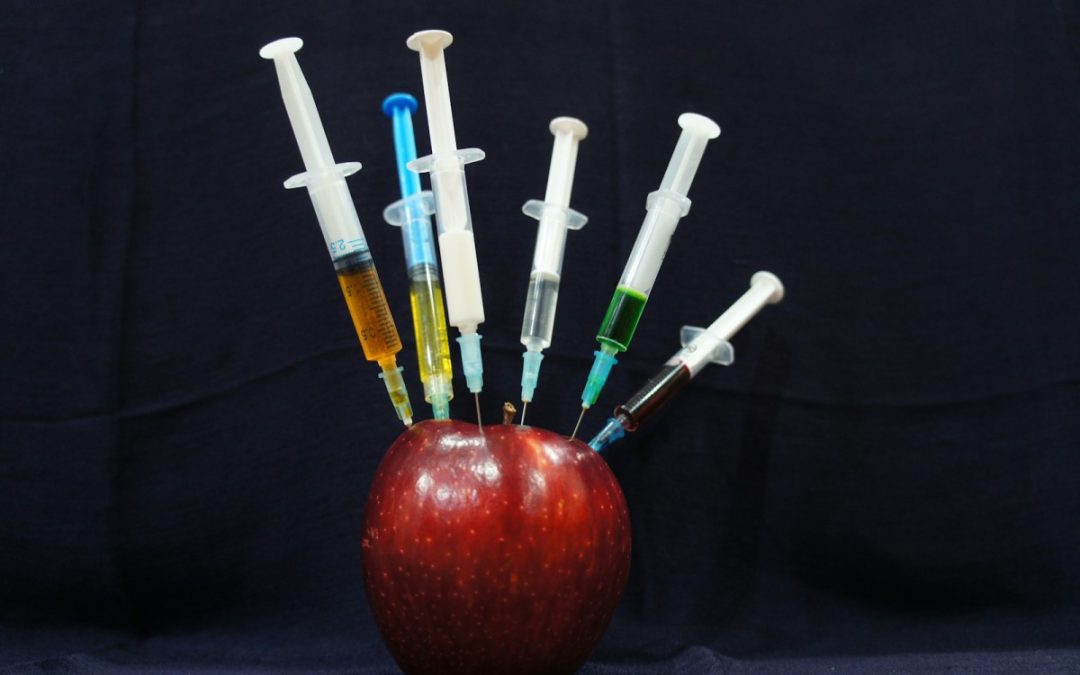
by Dianne Villano | Sep 17, 2014 | Nutrition
The definition of “natural flavor” under the Code of Federal Regulations is: “the essential oil, oleoresin, essence or extractive, protein hydrolysate, distillate, or any product of roasting, heating or enzymolysis, which contains the flavoring constituents derived from a spice, fruit or fruit juice, vegetable or vegetable juice, edible yeast, herb, bark, bud, root, leaf or similar plant material, meat, seafood, poultry, eggs, dairy products, or fermentation products thereof, whose significant function in food is flavoring rather than nutritional” (21CFR101.22).
What about the flavorings used in organic foods? Foods certified by the National Organic Program (NOP) must be grown and processed using organic farming methods without synthetic pesticides, bioengineered genes, petroleum-based fertilizers, and sewage sludge-based fertilizers. Organic livestock cannot be fed antibiotics or growth hormones. The term “organic” is not synonymous with “natural.” The USDA’s Food Safety and Inspection Service (FSIS) defines “natural” as “a product containing no artificial ingredient or added color and is only minimally processed (a process which does not fundamentally alter the raw product) may be labeled natural.” Most foods labeled natural, including their flavorings, are not subject to government controls beyond the regulations and heath codes.
Remember, “natural flavors” are listed on the label because they have been added to the food. This means that it’s not natural for whatever food product you are consuming. Most processed foods have flavors (either natural, artificial, or both) added to them during the production process because all of the “flavor” has been processed.
Flavors are made by “flavorists” in a laboratory by blending natural or synthetic chemicals together to enhance the taste. Blending chemicals derived from a natural source, such as a plant or animal product makes natural flavors.
Combining synthetic (human-made) chemicals, on the other hand, makes artificial flavors.
Therefore, the primary difference between natural and artificial flavorings is in the origin of the chemicals used to produce their tastes.
“Natural” flavors are made in a lab by “flavorists” just like “artificial” ones.
Sure it’s a “natural flavoring”, but does “being natural” mean that you want to eat it?
Many disgusting substances are considered “natural,” yet you may not want to be eating them.
For example, millions of people across the globe are eating “beaver butt” and don’t even realize it.
It’s called “castoreum,” and it’s emitted from the castor sacs within the animal’s anus. For a beaver, this slimy brown substance is used to mark its territory, but for us humans, it’s used as an additive that is often labeled as “natural flavoring” in the foods we eat – vanilla, strawberry, and raspberry probably being the most common.
Why is castoreum used? The most notable characteristic (after being processed) has to be the smell of castoreum. Instead of smelling horrible, like most people would expect from an anally produced secretion, it has a pleasant scent, which supposedly makes it a perfect candidate for food flavoring and other products.
Another example? You might assume that the added “natural flavoring” in a citrus-based food comes from an orange or grapefruit but according to the FDA definition, it could be some food science miracle and actually come from chicken feet.
The bottom line is that you have to read labels. “Natural” might not be so natural, and even some organic foods might contain some of these “natural flavors.” There are still many grey areas for consumers and producers alike.
Are Natural Flavors Harmful to Health and How Do They Affect Weight Loss?
The bottom line questions are: “Are natural flavors harmful to my health, and how do they affect weight loss?”
Health Concerns
The answer is that natural flavors are probably no more harmful than anything else processed in a lab. I haven’t researched the health aspect specifically yet, but my common sense tells me that if I eat food containing something manufactured in a lab, I am consuming highly processed and chemically processed ingredients without knowing their actual source. If you must keep eating processed foods with “natural flavors,” you can always contact the company and ask for the source of these flavors.
Weight Loss Impact
As to how natural flavors affect weight loss, common sense suggests that if my body is not sure what exactly it is and was not designed to process it, it will not burn those calories the same way.
If you haven’t already done so, click HERE to grab your FREE Copy of my Special Report “22 Big Fat Lies Keeping You From The Body You Want” and discover the lies the fitness industry (and maybe even your Dr) are telling you that are keeping them in business and keeping you from the body you deserve.

by Editor | Jun 9, 2011 | Nutrition
To supplement or not to supplement – that is the question on more bodybuilders’ lips than ever before. Are they safe? What works and what doesn’t? Let’s have a look at the basics.
There are various reasons why athletes may be interested in supplementation:
- Concern about getting adequate nutrients from our food supply
- Suspicion of pharmaceuticals
- The belief that diet alone will not achieve optimal nutrition…
Supplements include the following:
- Vitamins
- Minerals
- Amino Acids
- Herbs
The concerning thing about supplements is that anything classified as a dietary supplement is not required to meet any FDA or other standards! Think about that! there are no regulations in place that guarantee the safety or purity of something sold as a supplement. They are also not made to meet similar safety requirements as prescription drugs or any other manufacturing standards. They are not required to meet product potency or purity ratings and are not required to prove the effectiveness of any health claim that is made. Studies suggest that a number of supplements may deliver on advertising claims.
However, trainees are spending large sums of money on products that have little or no proven usefulness. Personally, I find the use of supplements overrated and as with strength training, supplementation asks the same question “If a little is good then maybe more has to be better” Supplementation and steroids started to proliferate when volume strength training became the training system of the day. Young strength trainees slaving in the gym for five to six days a week was seen as normal. All this without making any progress or putting on any size whatsoever. They then turned to the latest supplement or steroid thinking that this is the magic bullet to put on that added muscle when all the time they were just plain “overtraining” The cold hard facts are that the majority of the regular trainees in your gym are overtraining.
The sad reality is that the type of training that you find in bodybuilding books and magazines (and used by the stars) is irrelevant to the majority of the population and has a high failure rate. If more bodybuilders started using more infrequent, short, high-intensity weight training sessions, followed by the required amount of time to recover and become stronger…
MOST OF THE WEIGHT GAIN SUPPLEMENTS AND STERIODS AVAILABLE TODAY WOULD NOT BE NEEDED.
The bottom line on weight gain supplements:
- Before taking a supplement try to make modifications to your diet that might achieve the same goals.
- Only choose products that show the amount of active ingredients on the label that are required.
- Be aware that “natural” does not mean ‘safe’.
- Some herbal supplements may have unpleasant side effects.
Listed below are some popular bodybuilding supplements available on the market today:
Creatine Monohydrate
Creatine was first introduced to the marketplace some eight years ago and has since become the most popular bodybuilding supplement of all time. Creatine is said to significantly increase lean muscle mass, improve performance, increase energy levels, and speed up recovery rates. Creatine also stimulates the uptake of amino acids in the proteins, which means that the more that it’s used the more muscle that may be grown.
Dosage: A loading phase of 20 grams a day for the first five days then a maintenance phase of 5 grams a day from then on.
Whey Protein Isolate
The highest yield of protein currently available is extracted from milk. This is another popular supplement for athletes and bodybuilders because of its high proportion of amino acids. It is supposed to be high in potassium, which is essential for muscle growth, and is an antioxidant and a good immune system builder.
Dosage: 20gms – 100gms a day.
Tibulus Terrestris
Tribulus Terrestris is a plant that grows in many tropical and moderate areas of the world and is very rich in chemical compounds such as saponins, flavonoids, and alkaloids. Tribulus Terrestris is supposedly a testosterone enhancer. and increases sex drives in both men and women.
Dosage as per bottle.
Glutamine
Is a non-essential amino acid, which makes up to 60% of the amino acids in the body’s muscles. Glutamine-containing products are protein shakes and good quality protein powders; it can also be added to protein shakes for added potency.
Dosage: 5 grams to 15 grams per day.
So please remember a supplement is something added to the diet to make up for a nutritional deficiency or imbalance they are not intended to substitute for eating a balanced diet. If they are to be taken at all they should only be used to supplement the diet and not replace it.
Gary is the author of several ebooks, including “Maximum Weight Loss in Ten Weeks” – the complete ebook and time-saving solution for burning away unwanted fat, and “Maximum Weight Gain in Ten Weeks” – easy-to-use and follow techniques that serve as a guide to muscle growth without having to “live in the gym”.
Disclaimer: The information is for general informational purposes only and should not be considered a substitute for professional medical advice. Before starting any weight loss regimen or incorporating supplements into your diet, consult with a qualified healthcare professional or registered dietitian.
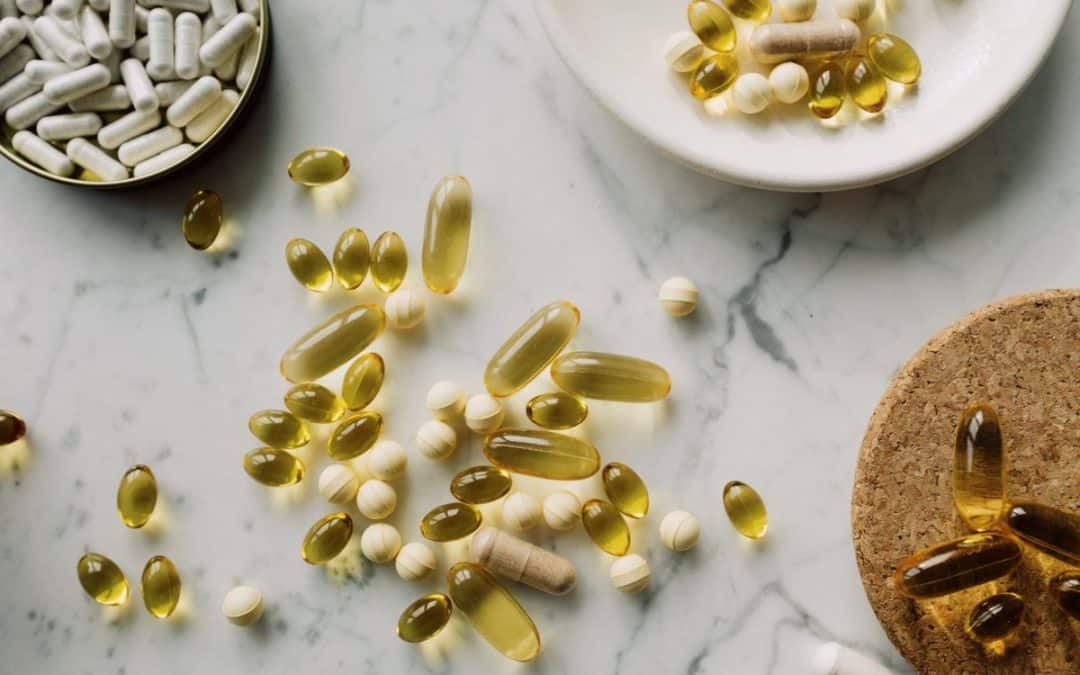
by Editor | Jun 9, 2011 | Nutrition, Weight Loss
There is a lot of confusion about weight loss supplementation, how to use it, what to use, and how much to use. In this article you will find the pick of today’s latest supplements on the market and armed with the right information you will have the knowledge to burn more body fat and have more energy for the things you want to do…
Remember that supplements do not replace proper diet and exercise but when used with the right training and weight loss program may help you make faster progress towards your weight loss goals.
Please remember that before taking on a training and supplementation program and if you are on medication always consult with your physician first. Now let’s have a look at the supplements:
Chitosan
Chitosan is a fiber whose fat-binding ability is so strong that it can be used effectively to promote weight loss. The most important health property of dietary fiber is its ability to bind to fat molecules in the digestive system, which in turn are excreted.
Since Chitosan can’t be digested, the fat absorbed is passed out of the body. Together with a low-fat eating plan and regular exercise, Chitosan is a great choice for keeping off those unwanted pounds. Try taking 15 minutes before a meal to inhibit fat absorption.
Dosage: as per the bottle
Ma Huang
A popular Asian herb that has been used for over 5,000 years is Ma Huang; it was first used by the ancient Chinese people as a decongestant.
The active ingredient is ephedrine, which has been shown to contain powerful fat-burning characteristics which can enhance thermogenesis, the body’s burning of fat for energy.
It also increases the basal metabolic rate, which allows your body to burn calories faster and more efficiently. By mobilizing stored fat and carbohydrate reserves, Ma Huang works to reduce your appetite and aids in helping you lose excess weight.
Try combining with White willow bark and Guarana as the fat-burning and muscle sparring effects of this stack are fantastic.
Dosage 300mgs twice a day.
Zhi Shi
Citrus aurantium is commonly referred to as bitter orange. Zhi shi is the immature dried fruit of citrus aurantium. Zhi Shi may be more thermogenic than ephedrine and has fewer side effects.
It can also be very effective in stimulating the metabolism (this stimulation causes an increase in the metabolic rate which burns calories) without any undesirable effects on the nervous system. Citrus aurantium may also act as an appetite suppressant.
Try combining with caffeine, white willow bark, cayenne, and green tea for greater thermogenic action.
Dosage 300mg three times a day.
Pyruvate
Pyruvate is a naturally occurring substance found in weight loss and herbal ‘fat-burners’.
Studies have shown that using diet pills containing pyruvate while restricting caloric intake slightly and participating in strength training will boost your metabolism resulting in weight loss.
Pyruvate produces ATP, which makes it a great supplement to take with creatine and ALC (Alpha Lipoic Acid) comes in Sodium and Calcium, try Calcium.
Dosage 1 gram to 5 grams per day.
Bcaas
Branched Chain Amino Acids are essential amino acids, which means that the body by itself cannot produce them so sufficient quantities must be obtained from supplementation.
The three Bcaas (Valine, Leucine, and Isoleucine) make up approximately 70 percent of the amino acids in the body. Bcaas are unique in that they are utilized directly by muscle tissue during long workouts.
Since your body only has a limited number of these amino acids, it can be forced to break down lean muscle tissue when dietary sources aren’t meeting your needs.
Bcaas can be found in most good protein powders these days.
Dosage 5 grams – 15 grams
Ribose
Ribose is a simple sugar that occurs naturally in all living cells and is one of the simplest molecules used by the body to build and restore energy.
Ribose is very important for the production of ATP. ATP is the major source of energy used by cells including muscle tissue for normal function. Ribose has been shown to increase muscular levels, boost endurance, and promote recovery! It is also an important way to increase your energy levels.
Another new supplement that looks very promising.
Follow the dosage on the bottle.
Nacn-Acetyl-Cysteine
Nac is a powerful anti-oxidant and its ability to neutralize free radicals helps slow down the ageing process.
Nac has all the properties of l-cysteine and may be the most cost-effective way to boost peptide levels in the body. Nac has been shown to safeguard against a variety of toxic hazards such as cigarette smoke, auto exhaust, and certain herbicides.
It can also play a beneficial role in prostate and respiratory conditions. Surprisingly, it is more effective than supplementing with cysteine, methionine, or even glutathione itself! A very good cost-effective anti-oxidant.
Follow the dosage on the bottle.
Multi-Vitamins and Minerals
Multi-vitamin and mineral supplements are perhaps the most important single supplement that can be consumed by bodybuilders and athletes and the first supplement you should buy.
For the human body to perform at its optimum, it must be fed a vast supply of vital nutrients. If the body becomes deficient in just one of these essential vitamins or minerals optimum efficiency and performance decline.
People think that since you can not put on pounds of muscle they are a waste of time to take them but if your body is deficient in just one of the essential vitamins and minerals you will never reach your full potential. Try and buy the Multis that have the higher potency mineral formulas.
So please remember a supplement is something added to the diet to make up for a nutritional deficiency or imbalance they are not intended to substitute for eating a balanced diet. If they are to be taken at all they should only be used to supplement the diet and not replace it.
Gary is the author of several ebooks, including “Maximum Weight Loss in Ten Weeks” – the complete ebook and time-saving solution for burning away unwanted fat, and “Maximum Weight Gain in Ten Weeks” – easy-to-use and follow techniques that serve as a guide to muscle growth without having to “live in the gym”.
Disclaimer: The information presented in for general informational purposes only and should not be considered a substitute for professional medical advice. Before starting any weight loss regimen or incorporating supplements into your diet, consult with a qualified healthcare professional or registered dietitian.







